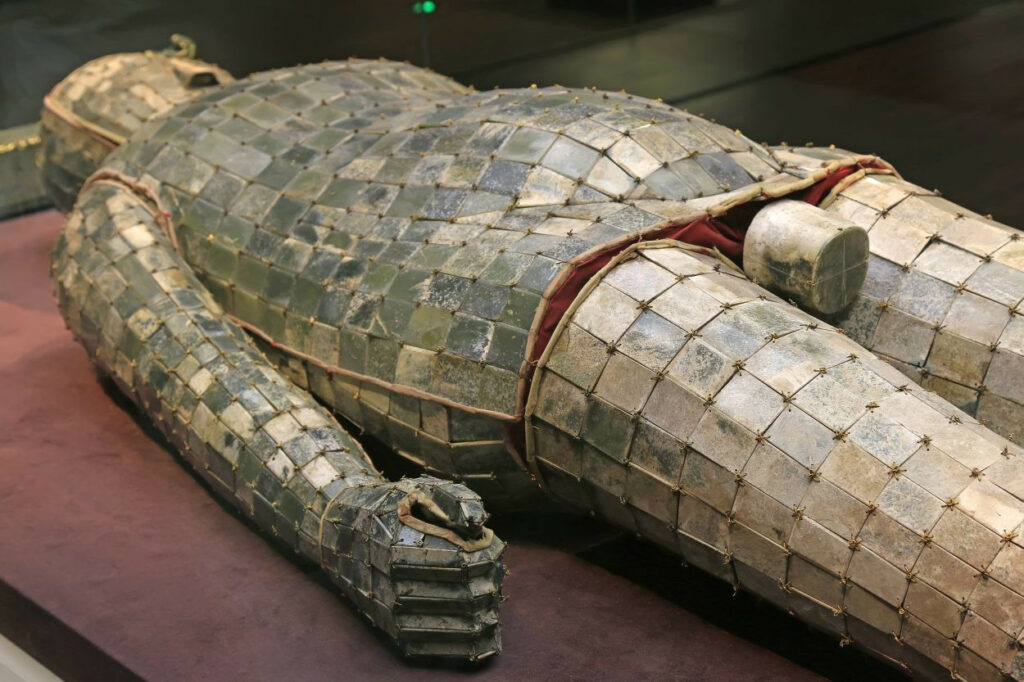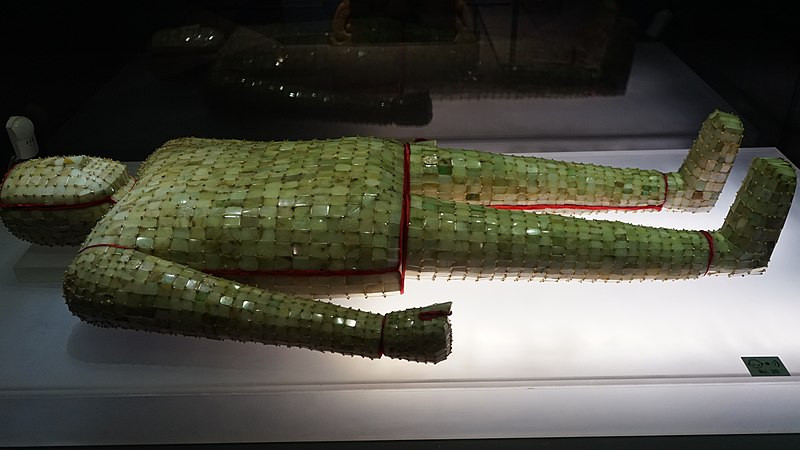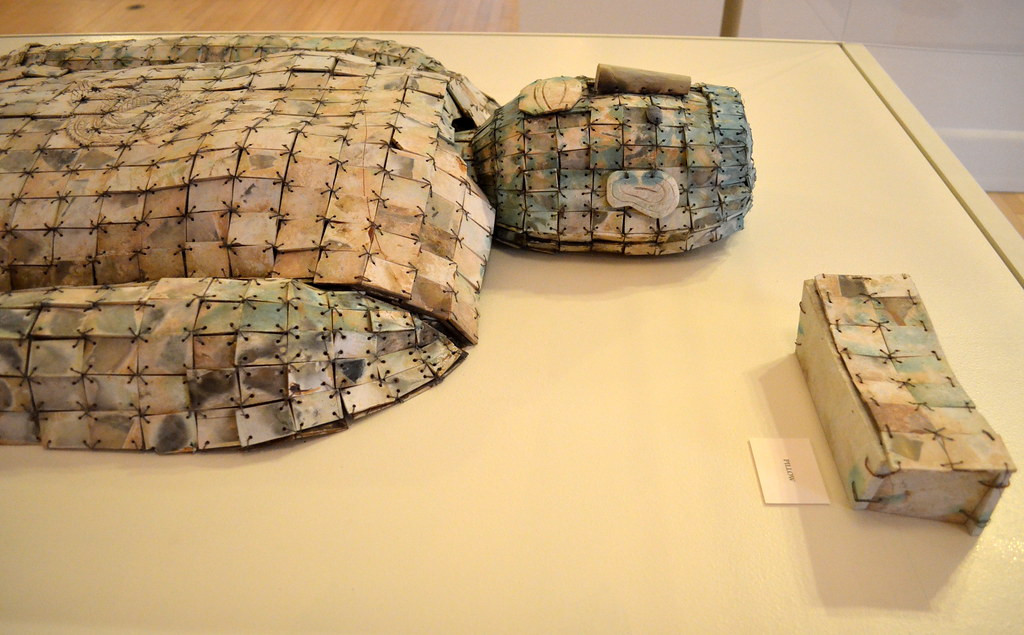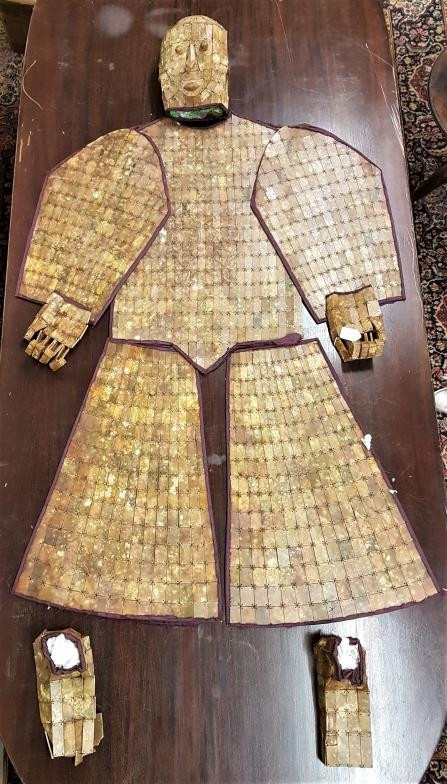The Discovery of a Lifetime

In the heart of Jiangsu Province, a remarkable treasure lay hidden for centuries. Wang Kai, curator of the Xuzhou Museum and an expert on Western Han Terracotta Warriors, had long suspected that “Lion Mountain,” a 60-meter-high hill east of Xuzhou, held secrets waiting to be uncovered. His persistence paid off when what was initially thought to be a humble sweet potato cellar turned out to be an archaeological goldmine.
A Jade Marvel Emerges

As excavations progressed, Wang and his team made a discovery that would stun the world of archaeology: a 1.74-meter-long jade suit comprising an astounding 4,248 individual pieces. Dating back to the Western Han Dynasty (202 BC-AD 8), this exquisite artifact would prove to be not only the oldest but also the largest jade suit ever unearthed.
The Craftsmanship of Kings
A Tapestry of Jade and Gold

The Xuzhou jade suit is a testament to the unparalleled skill of ancient Chinese artisans. Each of its 4,248 pieces was sourced from the renowned Hetian jade-producing region in Xinjiang Uyghur Autonomous Region. Meticulously shaped into squares, rectangles, crescents, and triangles, these jade plates measure just 1 millimeter thick and range from 1 to 9 square centimeters in size. The delicate jade pieces are interwoven with gold threads, collectively weighing 1,576 grams.
A Rare and Precious Find

The Xuzhou jade suit stands out among only three surviving examples from the Han Dynasty. Its counterparts, found in Hebei Province, belonged to Liu Sheng, Prince Jing of Zhongshan (2,498 jade plates), and Liu Xiu, Prince Huai of Zhongshan (1,203 jade pieces). However, the Xuzhou suit reigns supreme in both age and size.
The Mystery of Ownership

Despite the grandeur of the jade suit, the identity of its owner remains a topic of scholarly debate. Some theorize it could have belonged to Liu Yingke, son of Liu Jiao and nephew of Liu Bang, who briefly held the title of Prince of Chu before his death in 178 BC. Others propose it might have been created for Liu Wu, Liu Yingke’s son, who later participated in the Rebellion of the Seven States against the Han Dynasty.
A Legacy in Jade

The Xuzhou jade suit is more than just a beautiful artifact; it’s a window into the cultural and political dynamics of ancient China. It highlights jade’s enduring significance as a symbol of prestige and influence in Chinese society. Today, this national treasure is proudly displayed at the Xuzhou Museum, drawing visitors and scholars from around the world who come to marvel at its beauty and ponder the stories it could tell.

As we gaze upon this masterpiece of ancient craftsmanship, we’re reminded of the ingenuity, artistry, and rich cultural heritage of China’s past. The Xuzhou jade suit stands as a breathtaking testament to the skill of Han Dynasty artisans and continues to inspire awe and appreciation for the enduring allure of jade as a symbol of imperial splendor.

